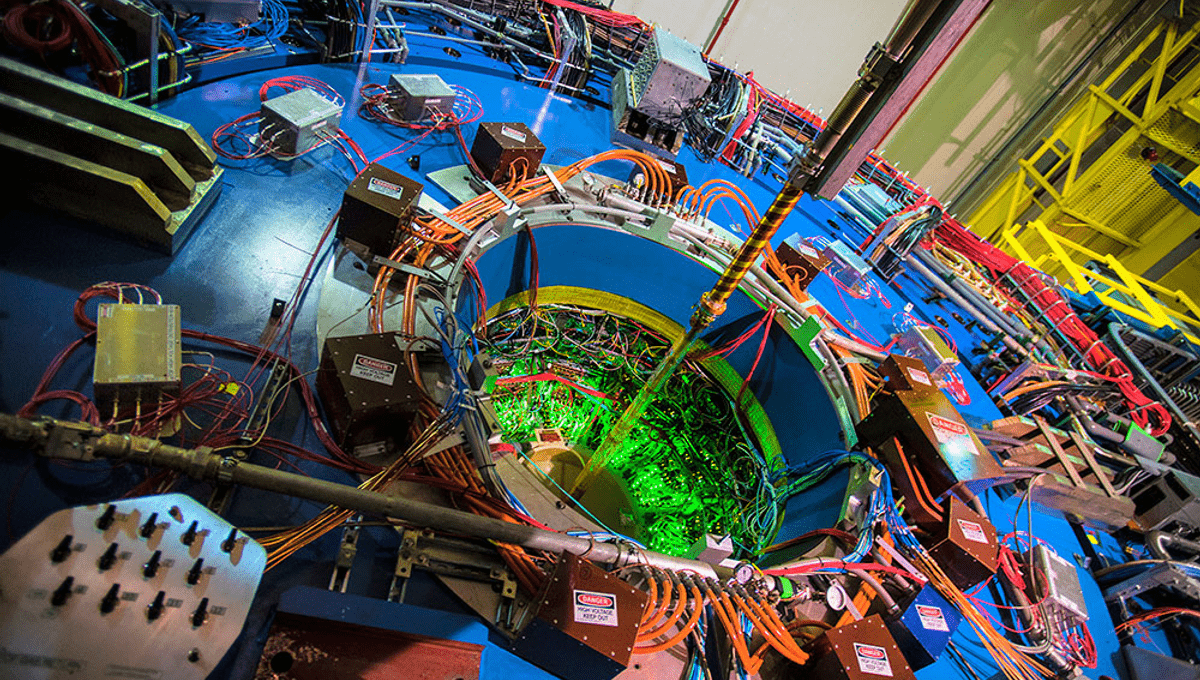
Positively and negatively charged versions of the same particle have been entangled for the first time, allowing us to map the hearts of atoms more precisely and opening the doors to more powerful communication tools.
The neutrons and protons that make up the nuclei of atoms are, in turn, composed of quarks. However, quarks alone would be unstable; they need gluons, the carriers of the strong force, to hold them together. Gluons are orders of magnitude too small to see, even with the most powerful microscopes – but they can still interact with photons to produce exceptionally short-lived rho particles that decay to charged two-quark particles called pions.
By measuring the angles and speed at which the positive and negative pions (π+ and π–) emerge, scientists at the Brookhaven National Laboratory have created a map of gluon distribution within the nuclei of gold and uranium atoms. They report this map to be the most precise description of the inner workings of an atomic nucleus.
“This technique is similar to the way doctors use positron emission tomography (PET scans) to see what’s happening inside the brain and other body parts,” said former Brookhaven physicist Dr Daniel Brandenburg in a statement. “But in this case, we’re talking about mapping out features on the scale of femtometers—quadrillionths of a meter—the size of an individual proton.”
The map provides particle physicists with a better understanding of the nature of reality, but the method by which it was made could prove more important still.
Quantum entanglement maintains a connection between separated particles such that a change to one affects the other. Although major advances in entanglement now happen frequently and even win Nobel Prizes, these have previously involved increasing the number of entangled particles or the distances over which entanglement occurs.
The entangled particles have usually been electrons, identical to each other, or photons. “This is the first-ever experimental observation of entanglement between dissimilar particles,” Brandenburg said.
The entangled particles may both be pions, but their opposite charges make them easy to distinguish from each other.
Most exploration of the inner workings of atomic nuclei is conducted in particle accelerators that smash nuclei together at close to the speed of light. Although watching the debris from these collisions tells us a lot about particle behavior under extreme conditions, such as shortly after the Big Bang, it is a little like observing the actions of animals in a zoo and extrapolating to how they behave in the wild. Brandenburg and co-authors are seeking to get closer to nuclei in their natural habitat.
To do this they had gold and uranium nuclei slip past each other at extreme speeds without colliding, just a few nucleus-widths apart. Each nucleus was surrounded by a cloud of photons produced by its acceleration in a magnetic field. The photons of one nucleus interacted with gluons in the other.
Having previously demonstrated these surrounding photons are polarized, the authors could produce a two-dimensional map of gluon distribution, with the direction of polarization providing one axis. Previous efforts that lacked knowledge of the polarization only revealed how far each gluon was from the center of the nucleus. Physicists had misinterpreted these results in ways that made the nucleus bigger than experiments conducted in other ways, and theoretical models, suggested.
“With this 2D imaging technique, we were able to solve the 20-year mystery of why this happens,” Brandenburg said.
The authors conclude previous measurements confused the photon’s own momentum and energy with that of the gluons. Disentangling the two allows for maps so clear Brandenburg claimed; “The images are so precise that we can even start to see the difference between where the protons are and where the neutrons are laid out inside these big nuclei.” They also fit much better with theoretical models.
How and why the pions entangle remains a mystery, although the paper offers several possible explanations.
The work is published open access in the journal Science Advances
Source Link: First Quantum Entanglement Between Dissimilar Particles Provides A View Inside Atomic Nuclei